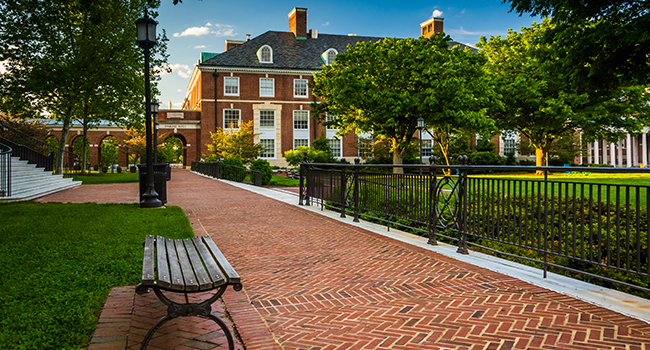
Johns Hopkins University Launches Center for Safe and Healthy Schools
Johns Hopkins University announced Monday the launch of the Center for Safe and Healthy Schools, a new center that will bring together experts to tackle difficult issues related to safety and health for schools and campuses.
- By Jessica Davis
- May 07, 2019
Johns Hopkins University announced Monday the launch of the Center for Safe and Healthy Schools, a new center that will bring together experts to take on difficult issues related to health and safety on school campuses by developing and making accessible solutions and resources. The center aims to provide campus leaders and policymakers with the tools they need to address relevant issues like trauma, bullying and gun violence.
The center’s launch was announced by Christopher C. Morphew, dean of the Johns Hopkins School of Education, at the annual Education Writers Association conference. The center will be led by the School of Education.
"All children and educators deserve to learn and work in safe and healthy schools, and all families deserve to know their children are in environments where they can learn and thrive," Morphew said. "The center will foster a more informed discussion about solutions and best practices in creating safe and healthy school climates, and will provide educators and schools with the knowledge, tools, and resources they can use to achieve that goal."
More than two dozen faculty experts from across Johns Hopkins will work within the center to apply their knowledge toward solutions that effectively address school safety and health.
Work at the Center for Safe and Healthy Schools will explore three areas of research:
- Health and wellness, including mental health, physical health, and social and emotional well-being
- Schools and community engagement, including school functioning, district leadership, neighborhood safety, and involvement of each school's diverse stakeholders
- School security and technology, including school safety technology, physical barriers, the role of school resource officers, and relationships with local and state law enforcement agencies
In the coming months, the center will release new research, best practices, tools and resources for use by schools and districts across the U.S. It will also implement pilot projects, research fellowships and a seed grant program for innovative, collaborative projects.
The School of Education will name a director for the center at a later date.
About the Author
Jessica Davis is the Associate Content Editor for 1105 Media.